The sea is cloudy
Recently, the European Union has published a report on the situation of the seas surrounding the continent. The report, prepared by the International Council for Marine Research, ICES/CIEM, has sought to identify the main problems.
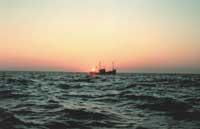
In fact, the ICES/CIEM began to study the North Atlantic Sea a hundred years ago and coordinates the research currently being carried out in the same and adjacent seas.
The report has taken into account the North East Atlantic, the Arctic, the North Sea, the Baltic, the Gulf of Bizkaia, the Black Sea and the Mediterranean, as well as the situation of the seas and the influence of human activities. They end up with some notes or advice, since the situation of the European seas is not the one desired.
In fact, at the beginning of summer, the Ministers of Environment of European States met and agreed to adopt measures for the protection of the sea. Now it is necessary to start fulfilling the agreed. Taking into account the economic and social importance of the seas for European countries, it is necessary to implement these measures if they do not want to jeopardize the future.
Fishing: Today's bread, tomorrow's hunger?
The report occupies a prominent place the study of the species being fished. And it is not surprising, because fishing is economically important for European countries.
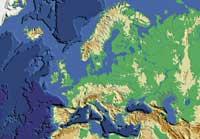
Unfortunately, the photo of scientists to species exploited by fishing is quite sweet. For example, in general, the situation of the stocks of the eastern North Atlantic is poor. The future of many fish species is critical, since they do not reproduce enough to replace what is caught. One of the clearest examples is cod, which, according to experts, is about to disappear south of the North Sea. They do not know to what extent it is due to overexploitation or climate change, but in traditional fishing grounds fishing is now very scarce.
The status of other species is also critical. For example, coal is located below the safe biological border in the North Atlantic and in the Faroe Islands, the hake in the North Sea, the sole and the saucer in British waters, among others.
In fact, according to a 1995 study, the European Union fleet is 40% higher than the one needed to make the catch sustainable. Consequently, a third of the stock controlled by the ICES/CIEM is in poor condition, while another 17% can be in good condition if catches are reduced. In total there are less than a quarter in good condition.
Faced with the danger of extinction of traditional stocks, fishermen seek new stocks. However, researchers warn that this is dangerous, since it is necessary to know the amount of fish in each area before starting fishing, since otherwise there is a risk of overexploitation.
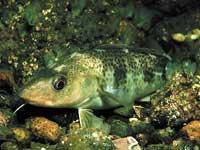
On the other hand, the networks accidentally capture species such as non-commercializable fish, birds, turtles, mammals... This influences the food chain and the balance between predators and prey. In addition, even if the fish belongs to the desired species, it may not be commercially interesting, for example for its small size or for its scaling. Normally they do not reach the port, are thrown into the sea, and are normally not able to survive. In general about a quarter of the catches are discarded, but sometimes they are much more: on the corners an average of 84% of the catches is rejected.
The resolution of these problems is not easy, but the ICES/CIEM proposes a series of measures. The first, logically, is to adapt the catches to the state of the stocks and, when necessary, to establish a total prohibition, as for example in the case of Baltic cod. On the other hand, to reduce unwanted catches, it recommends the use of acoustic alarms and, in general, less aggressive fishing gear.
Giant cube cube giant bucket
Besides fishing, there are other activities that affect the sea and that cause the arrival to the sea of eleven polluting substances: metals, organic compounds, radioactive elements, fuels... In the European Union there are 100,000 chemicals on the market and another 200-300 leave annually. Before marketing, rigorous studies are conducted, but in many cases they are insufficient to measure their possible environmental condition. For this reason, experts believe that we must be prudent.
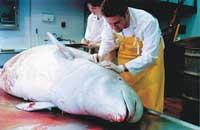
The most dangerous chemicals are substances that remain in the middle for a long time and accumulate in organisms. One example is polychlorinated biphenyls, PCBs. Although today they are banned, they were used in the past and there are still high concentrations even in places far from their place of origin, such as the Arctic.
There are substances that make long distances with the help of marine currents or wind. For example, less and less mercury is being emitted in Europe and North America, but the Asian spill reaches the Arctic. By accumulating in fat, it is concentrated in the tissues of marine mammals, finally reaching the human beings who consume them.
However, the PCBs and the mercury of the Arctic are just examples, there are many other pollutants in the Arctic, and, if they have reached there, it is not surprising that they are at much higher concentrations around the discharge sites.
Another problem that some pollutants present is eutrophication. When marine plants proliferate too much, the oxygen concentration of the water is reduced and light is prevented. This causes the death of several species and the decompensation of the ecosystem. And to this they directly affect the spills of nitrogen and phosphorus to the sea, the main food of phytoplankton and of the plants in general.
Although in its day the problem was phosphorus, detergents without phosphates are currently used and the situation is not as bad as before. However, nitrogen control is more difficult due to its wide variety of origins. It occurs, among other things, in the agriculture and burning of fossil fuels, reaching the sea mainly through the rivers.
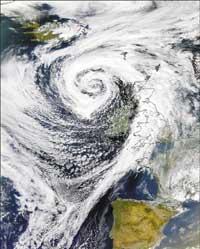
The biggest eutrophication problems are now occurring on the east coast of the North Atlantic, southeast of the North and Baltic Sea, and on the coast of the Black Sea. The ICES/CIEM considers that the measures taken so far are not sufficient and that, in addition, while there is no change in agrarian policy, the situation will not improve.
Transport problems
The European seas are one of the most important means of transport; in the Mediterranean, for example, they circulate 2,000 large ships a day. These, in addition to emitting pollutants, generate other damages.
The most significant damage is observed after accidents. The issue of the Prestige remains unresolved, and the worst is that the measures taken below do not guarantee that something similar will not happen in the future.
Fortunately, accidents do not occur every day. Therefore, it is necessary to pay attention to the usual activities, since their incidence is continuous. For example, to avoid the adhesion of algae and other living beings to the hull, they mix biocides with copper to the paints. But the influence of biocides is not limited to living beings who want to stick to the helmet.
Another problem is the water used by the transport boats to ballast when they go empty. Once arrived to the port of collection of goods, the ships pour the water they have collected in the starting point. Water, however, is at risk of spreading foreign species.
In 1982 an American medular comb (Mnemiopsis leidyi) was introduced into the Black Sea and the Azov Sea by ballast waters. This jellyfish consumes zooplankton, so it also consumes eggs and larvae of fish and molluscs. At five years he increased so much that he did not leave food for other species. As a result, the stock of anchovy descended spectacularly in the Black Sea and almost disappeared in the Sea of Azov.
More questions than answers
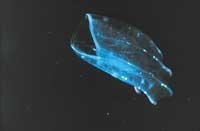
In addition to those already mentioned, the report analyzes many other agents: the coastal transformation work, the surface waste, the coastal wind farms, the aquaculture of marine species and climate change.
In fact, scientists' questions about climate change are more numerous than the answers, but all climate models predict a rise in temperature. According to the UN IPCC group, responsible for climate change, by 2100 the air temperature in the north-eastern Atlantic will increase by 1.5 °C and sea level 25 to 95 cm.
Scientists do not know the human influence and greenhouse effect on climate change, but it is clear that the temperature directly affects marine living beings and the fertility of stocks. However, it is still necessary to collect more data and conduct deeper studies. And that's what scientists demand: more resources to investigate the climate and the sea. And the future of the sea depends partly on the human being and vice versa.
To know the situation of the Gulf of Bizkaia we have come to Lorenzo Motos. He is the head of the fishing resources department of AZTI and, as he explained to us, among the species that are caught there is everything.
In general, small pelagic, such as anchovy, verdel, sardines, chicharro, etc., are not bad, although there is now a problem with anchovy. But it must be taken into account that anchovy lives only between two and three years, so the abundance of the stock is very variable: if in a year the new generation fails, it is observed in the next two years. Therefore, it must be analyzed in the long term, and in the last 10-15 years anchovy has done well and stock has been almost above the level of caution.
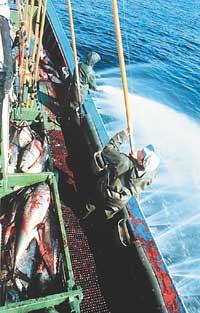
As for the large pelagic or tunnels, the bonito is in the highest level of exploitation, which means a maximum sustainable yield. Yes, uncertainty can make it overexploited. This is clear in the case of tuna or cymaroon. The stock of this species is bad, below the level of caution.
Even worse are demersal, hake and cod. Cod is bad around the world, except in the Arctic, and hake is below the level of caution. However, fishermen are fishing more than years ago. On the other hand, with hake fishing the monkfish, and although in the north it is capturing well, the stock is very hung.
Finally, the stock of tropical tunnels fishing the Bermeo fleet is in good condition, although it is reaching a maximum level of exploitation.
However, when analyzing the state of the stocks, in addition to fishing, one must take into account the influence of the climate. AZTI is part of the GLOBEC International Programme for Change and Ecosystem, which relates climate to stock productivity. In fact, the temperature of the sea water affects fertility, and the most sensitive species are pelagic and tuned.
We also wanted to talk with Lorenzo Motos about the impact of the Prestige dumping and said that the fuel condition cannot be denied. It is still early, but to know how it has acted, due to the great natural variability of the sea, it is not easy to know how much the changes are due to fuel. Therefore, we are studying aspects such as the degree of activity of the liver enzymes of fish, the state of plankton, the behavior of fish, etc. and it is expected that if in all of them something special appears they can draw conclusions.
Buletina
Bidali zure helbide elektronikoa eta jaso asteroko buletina zure sarrera-ontzian











